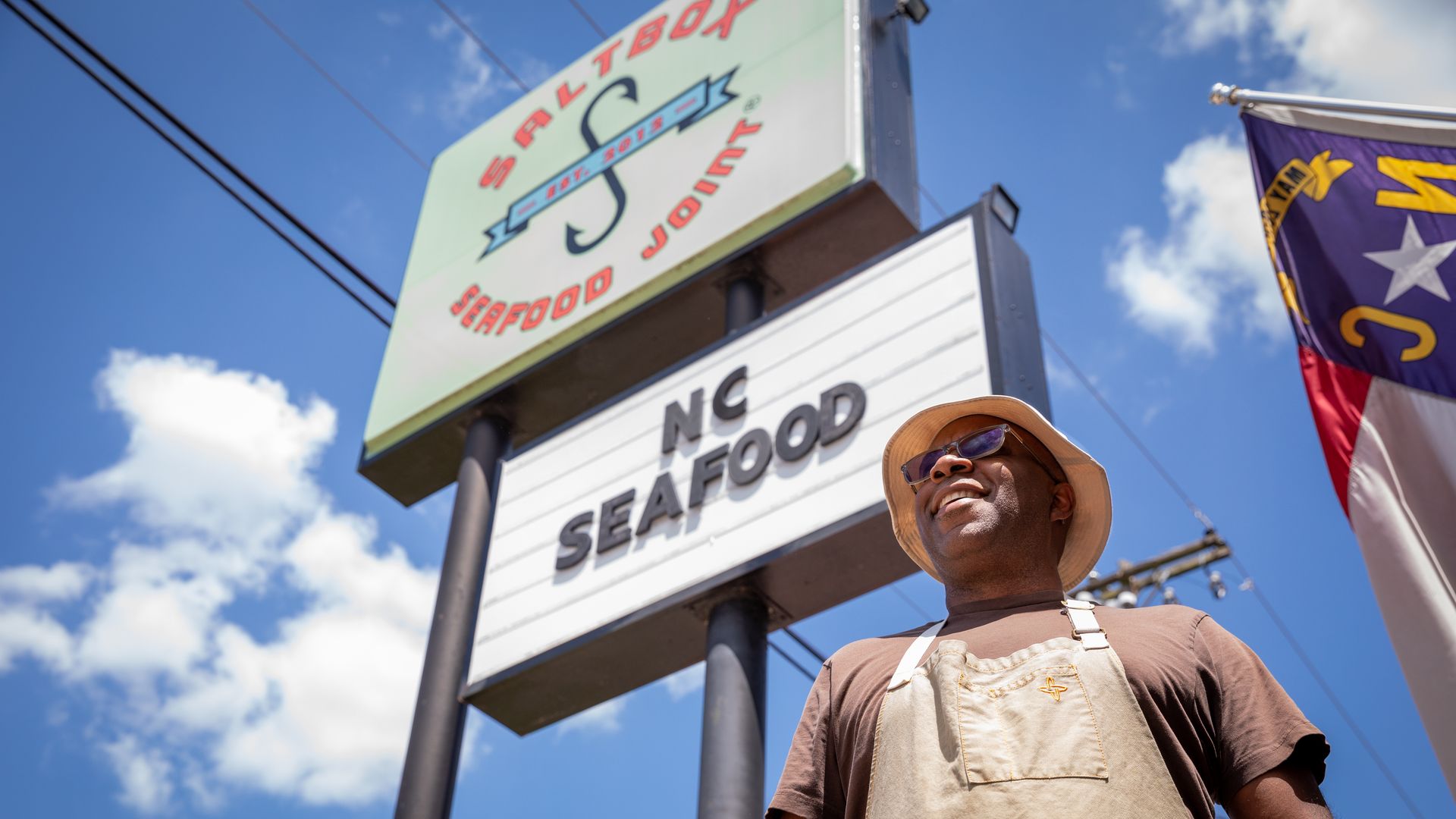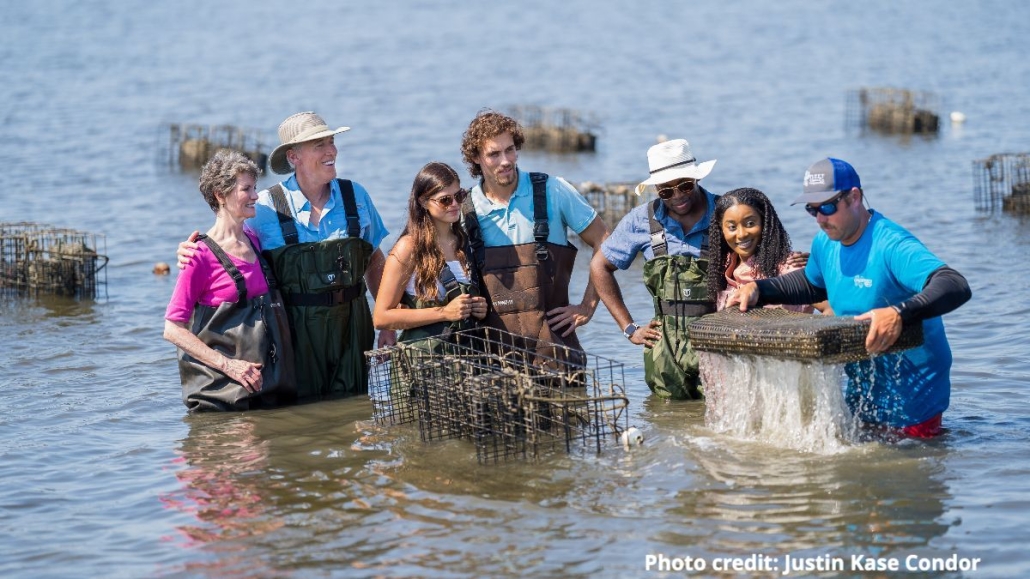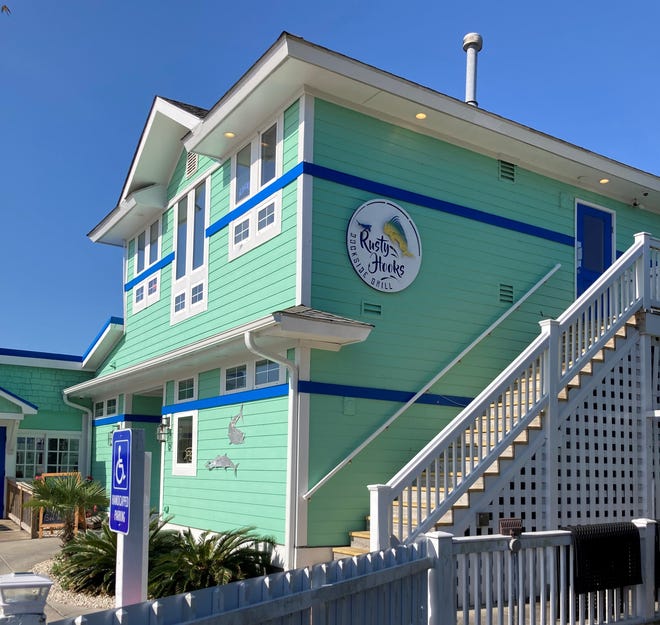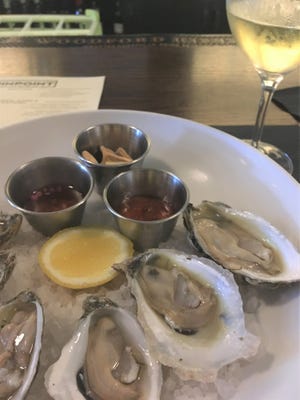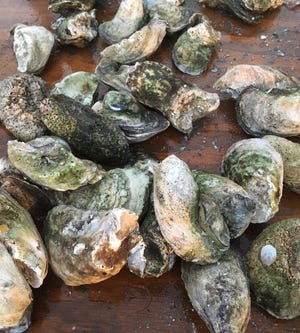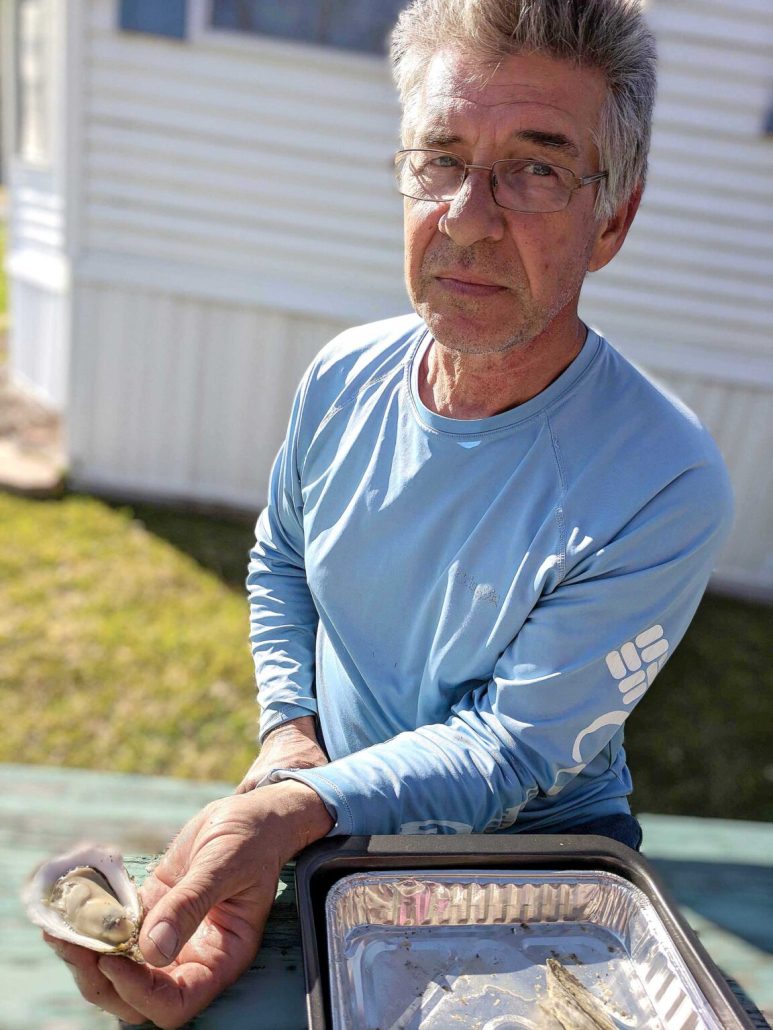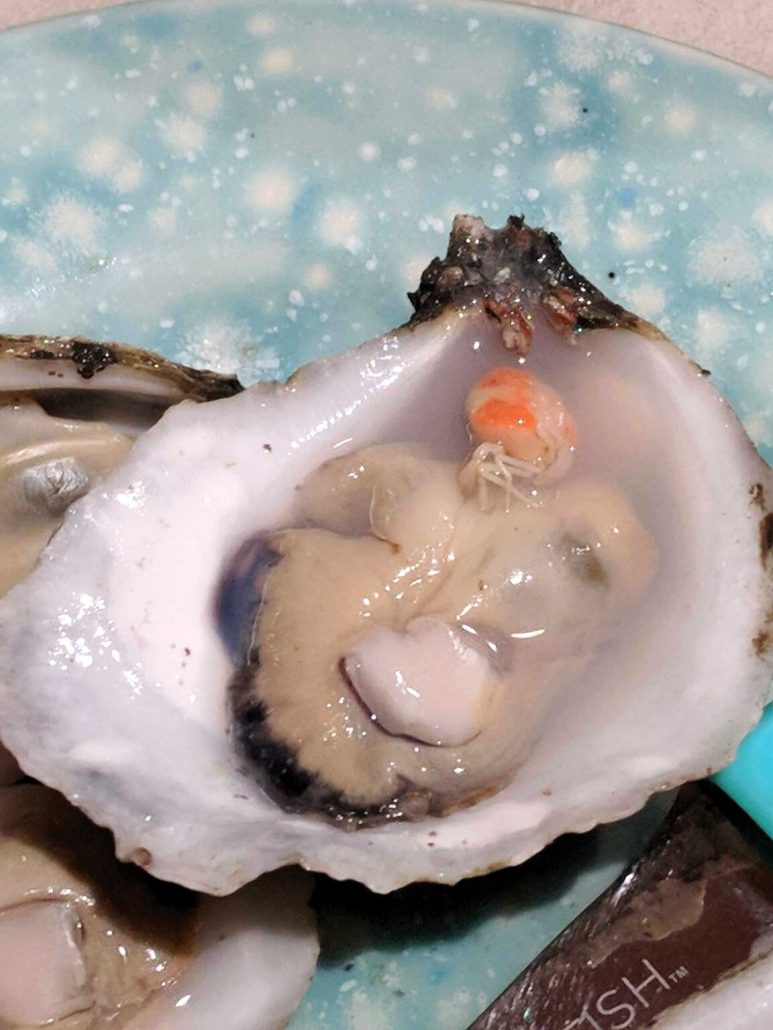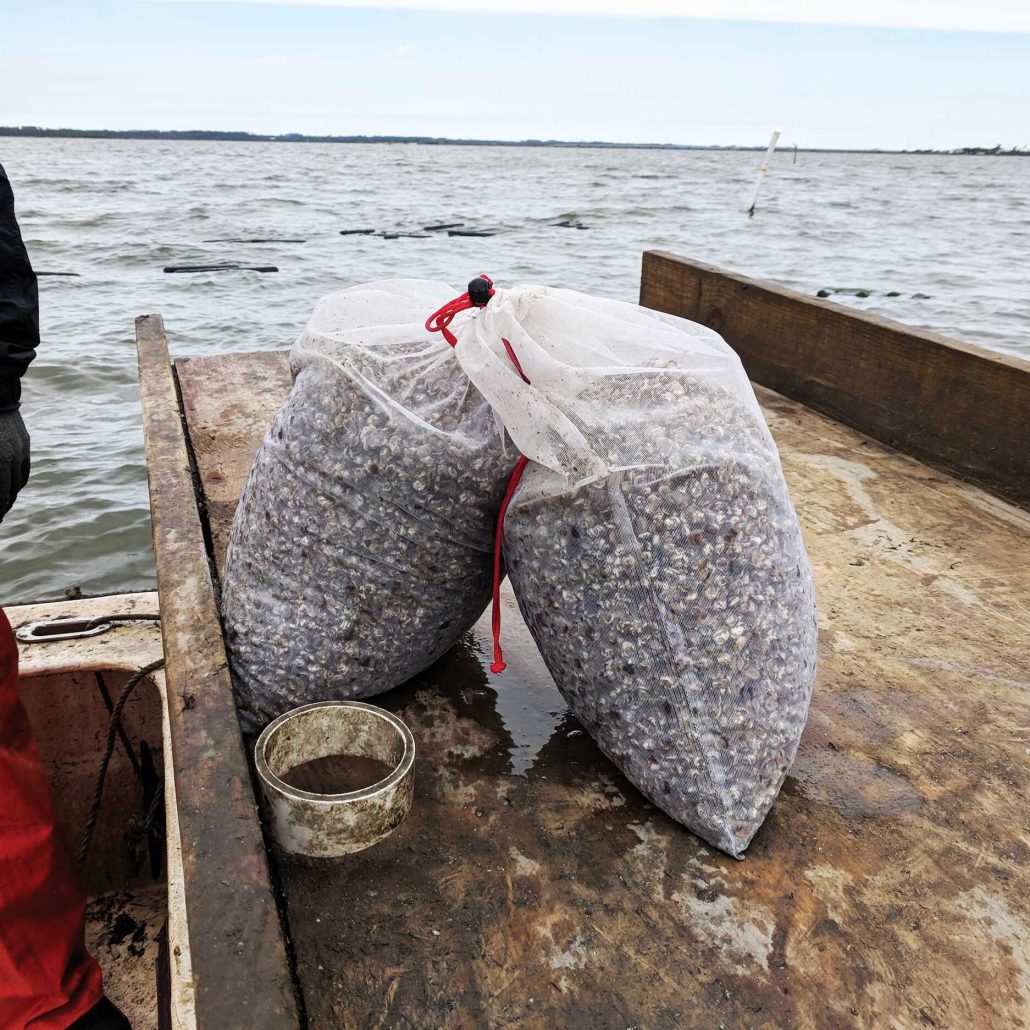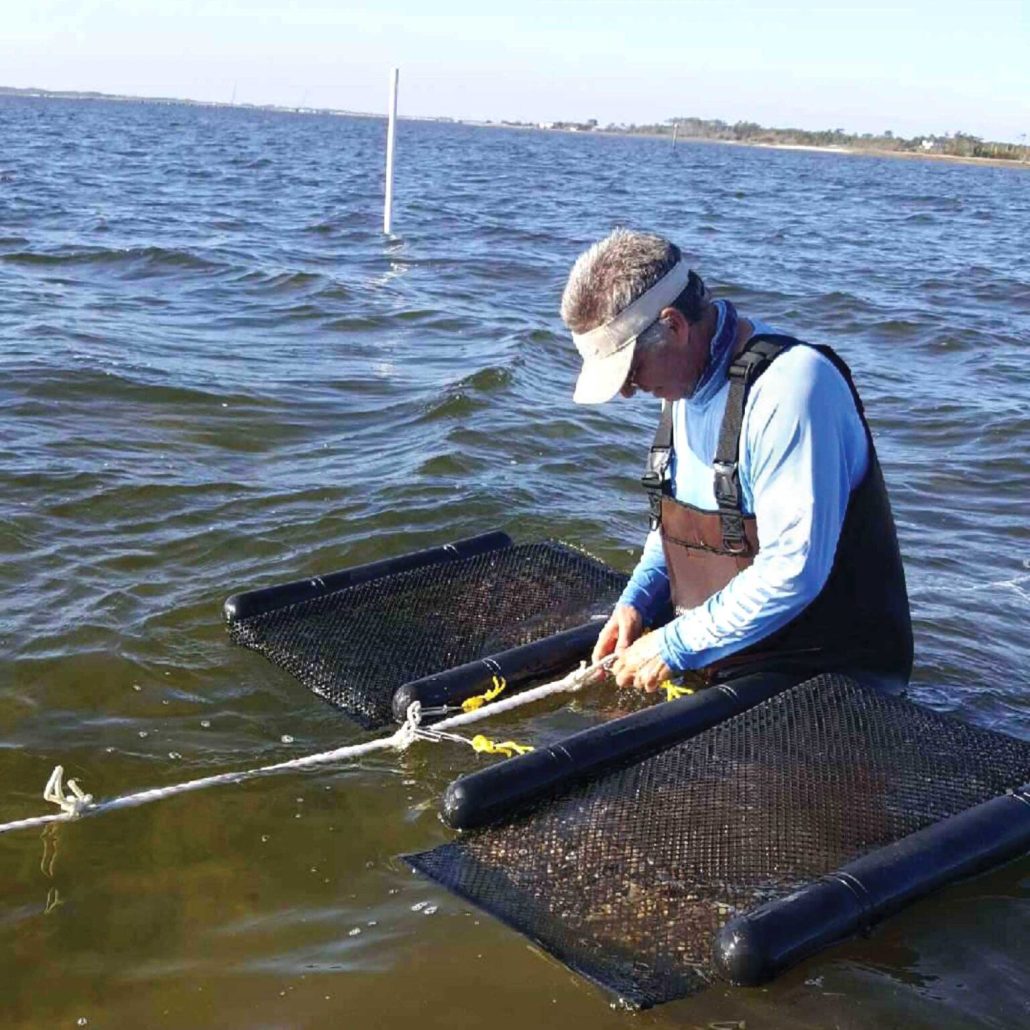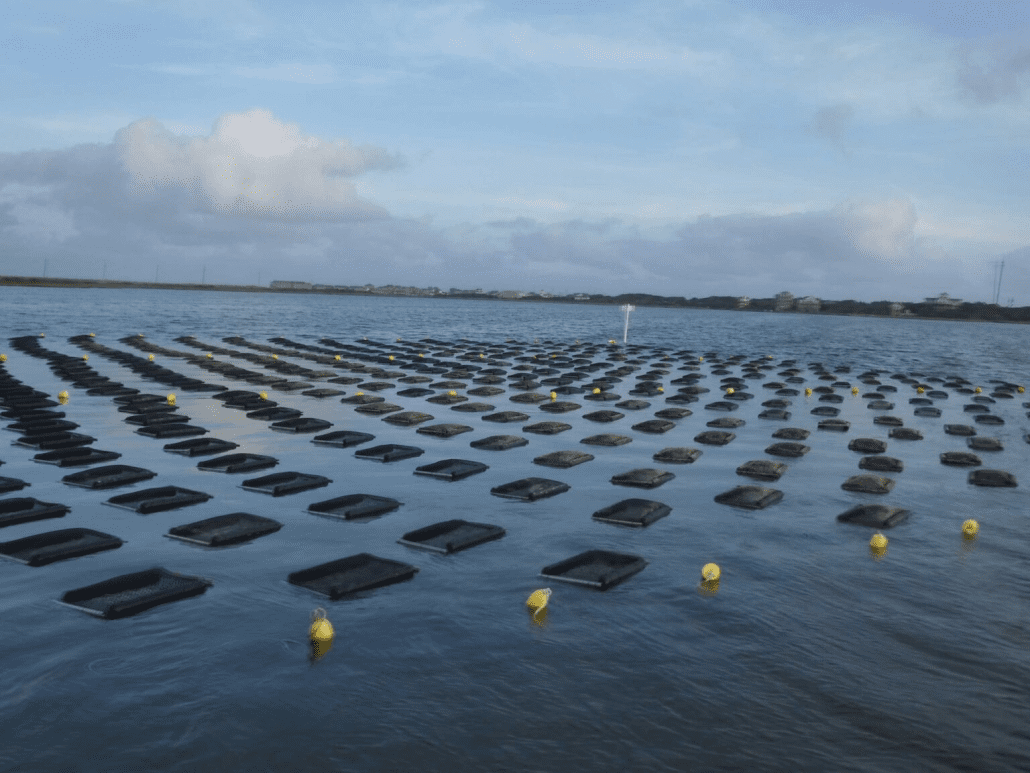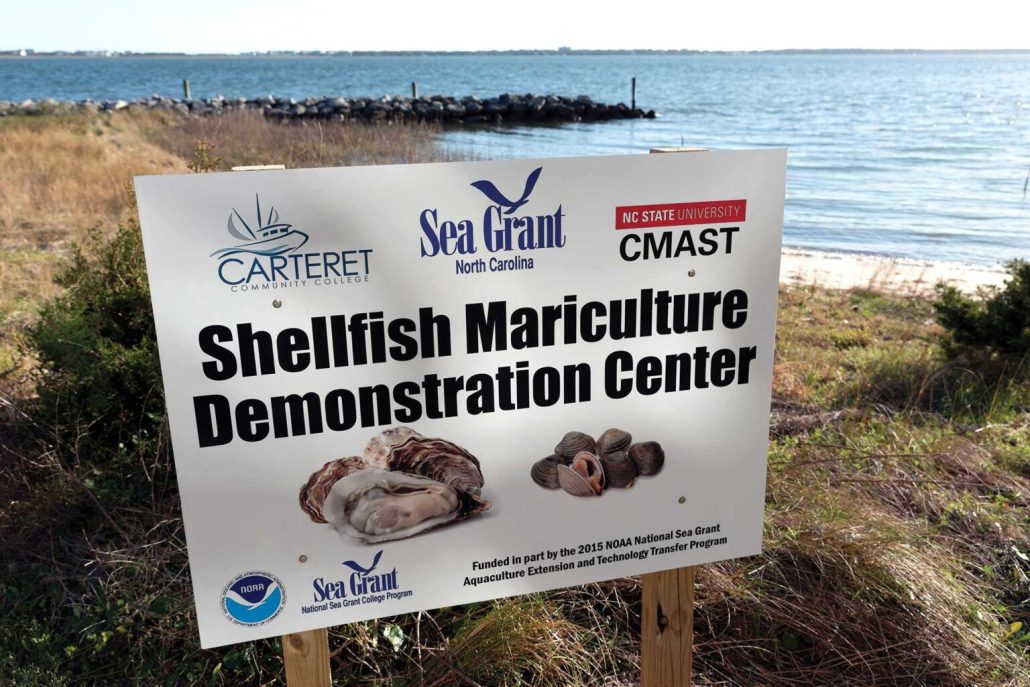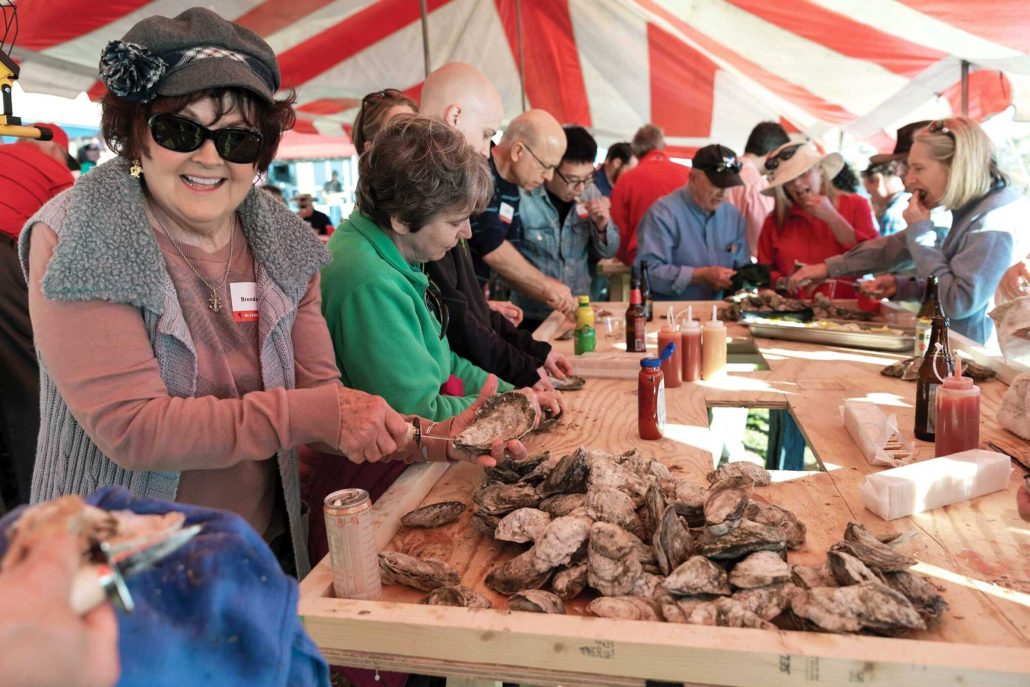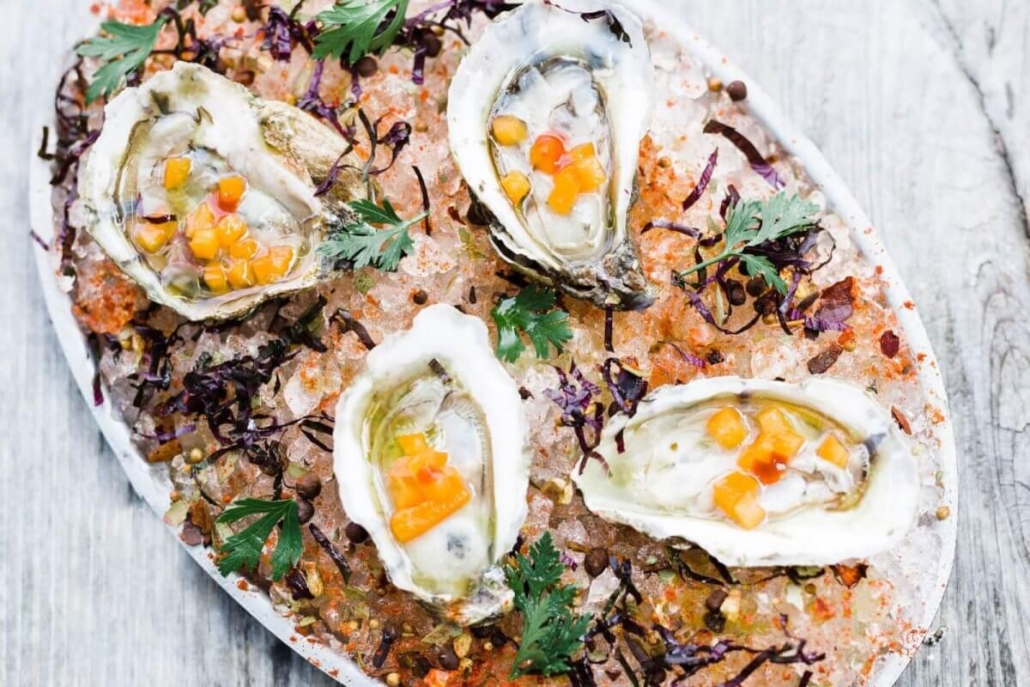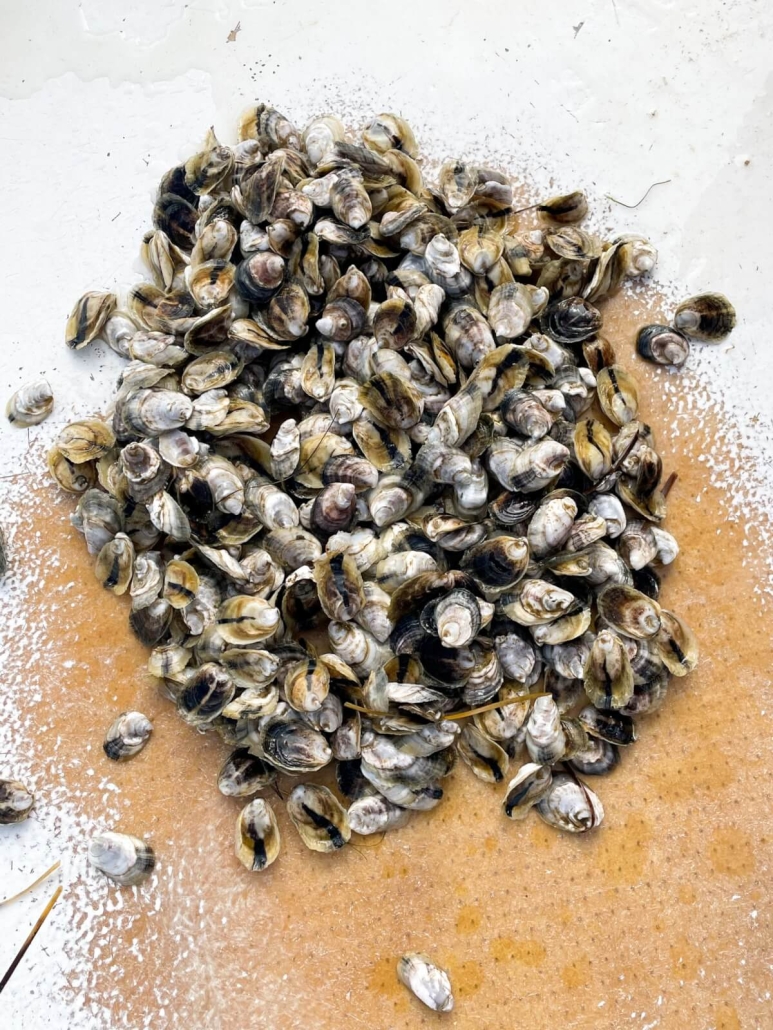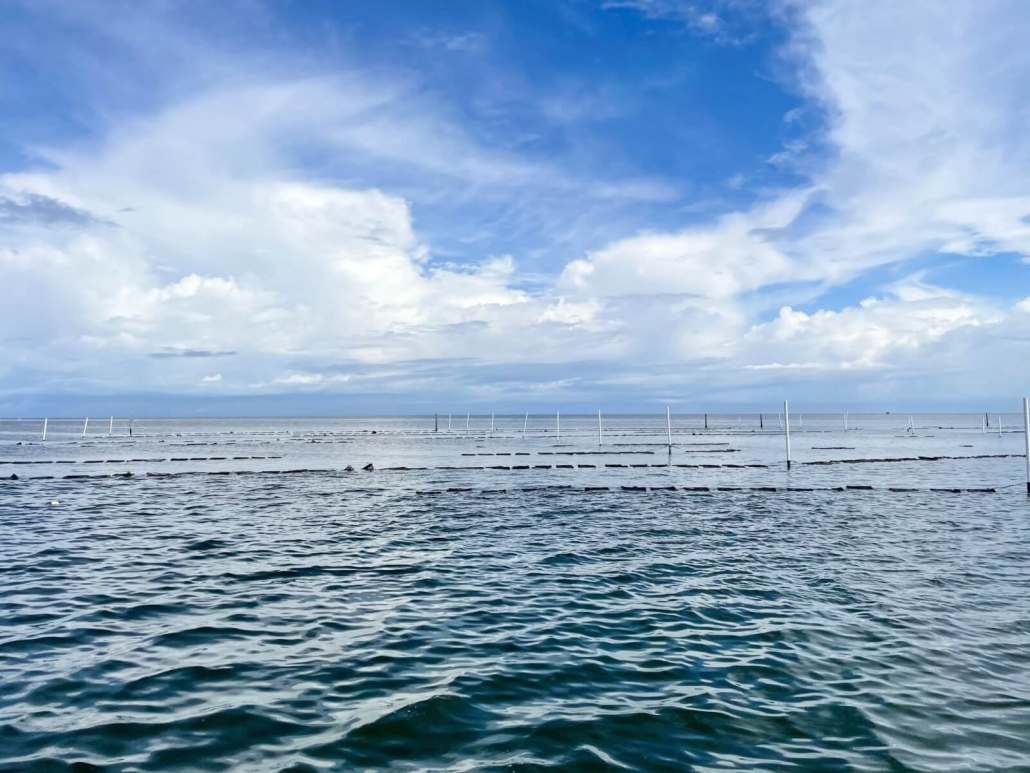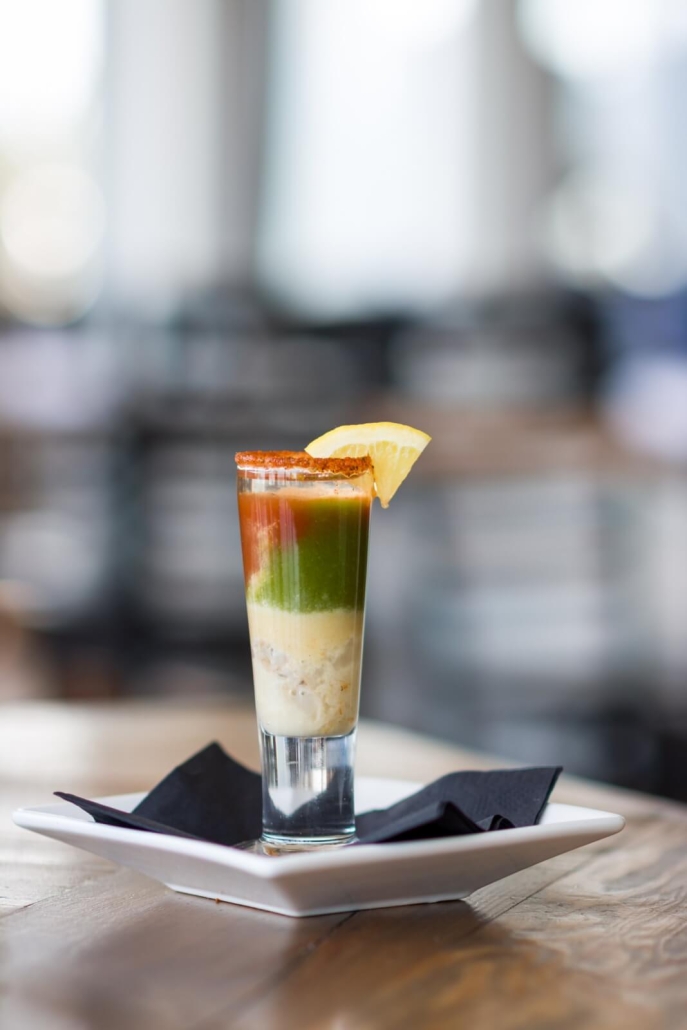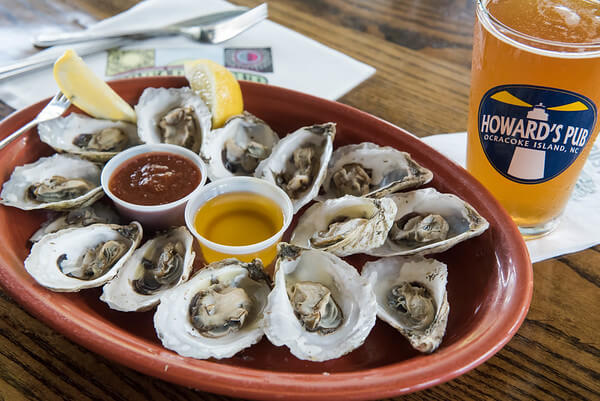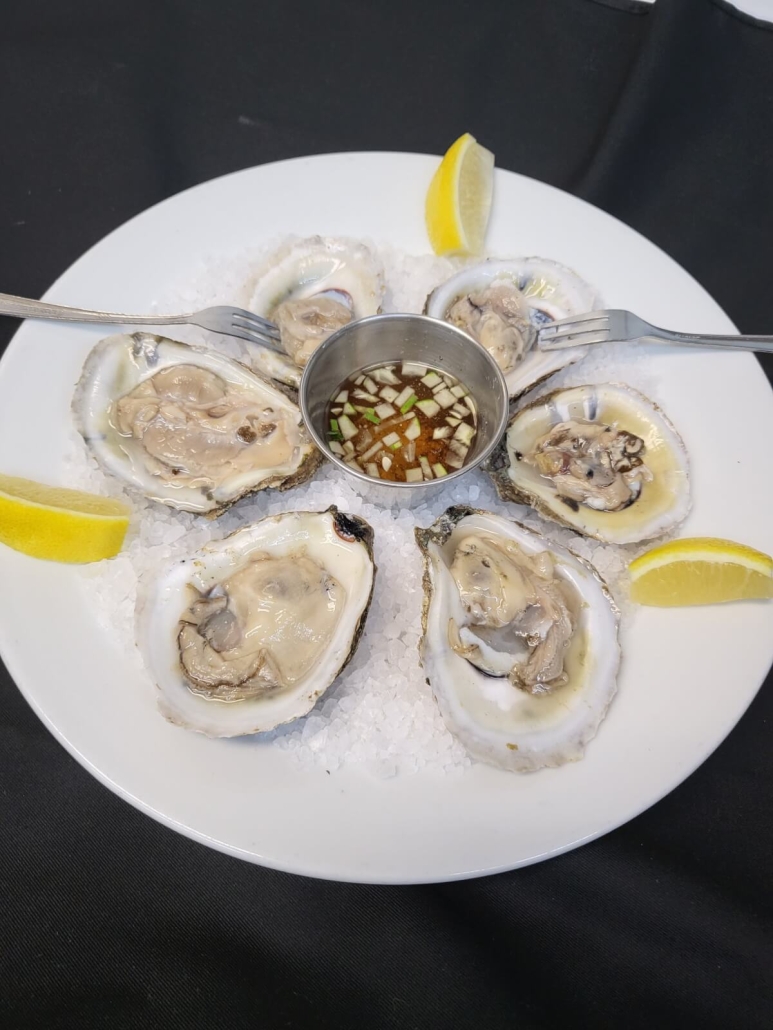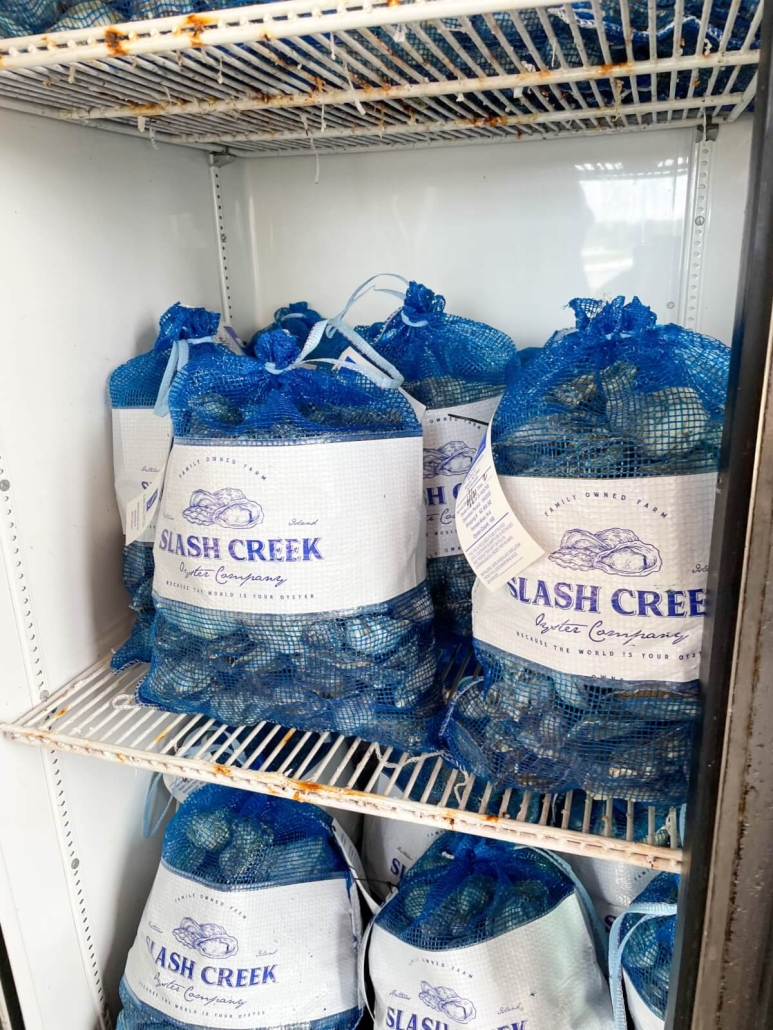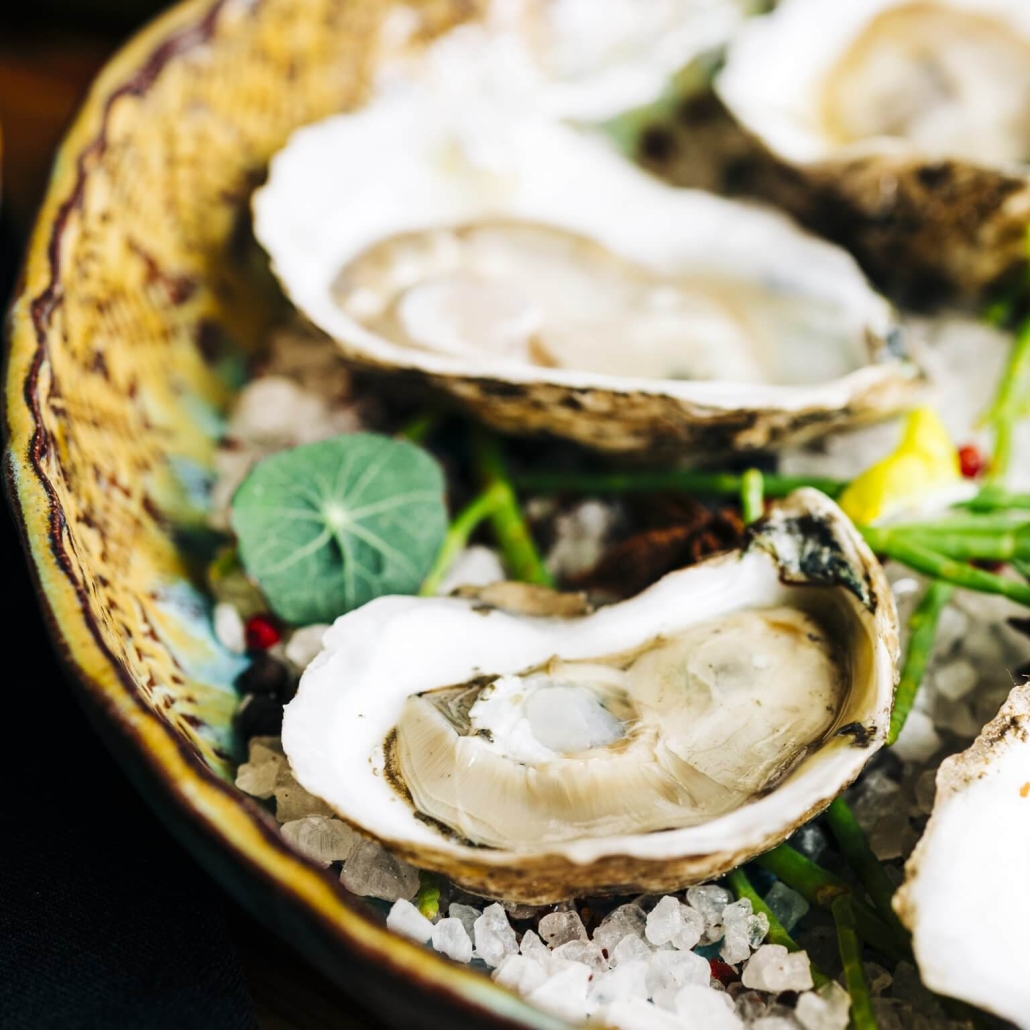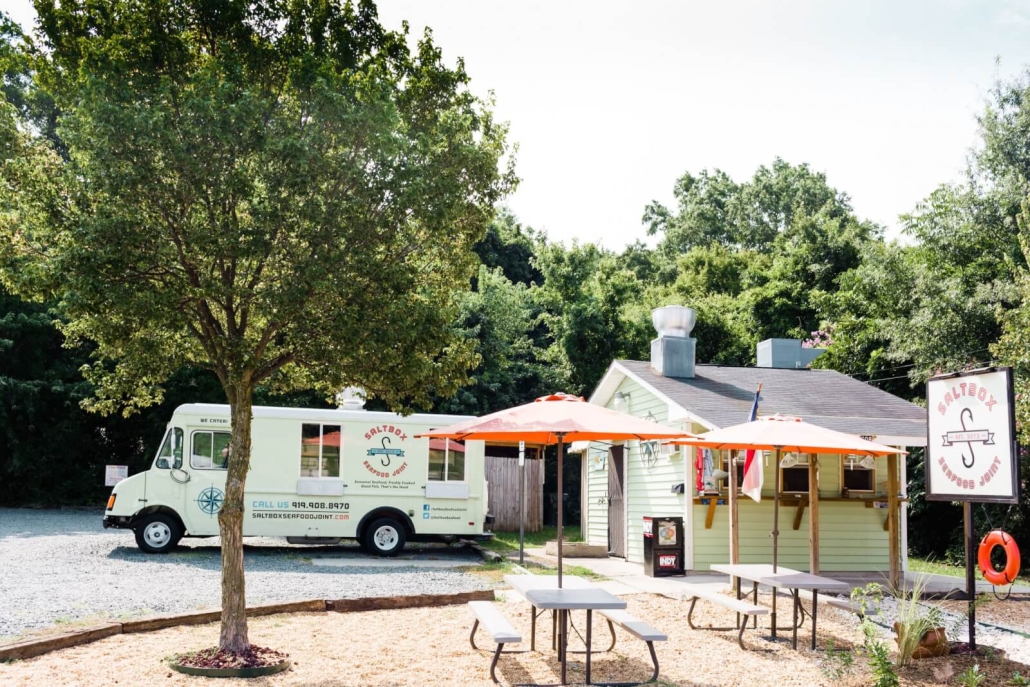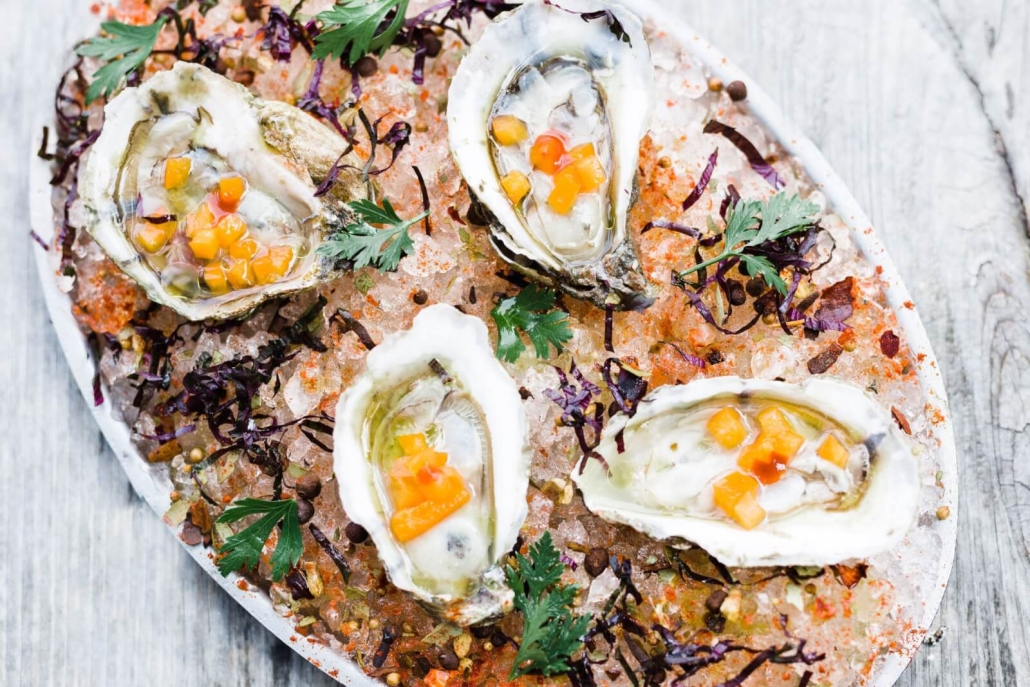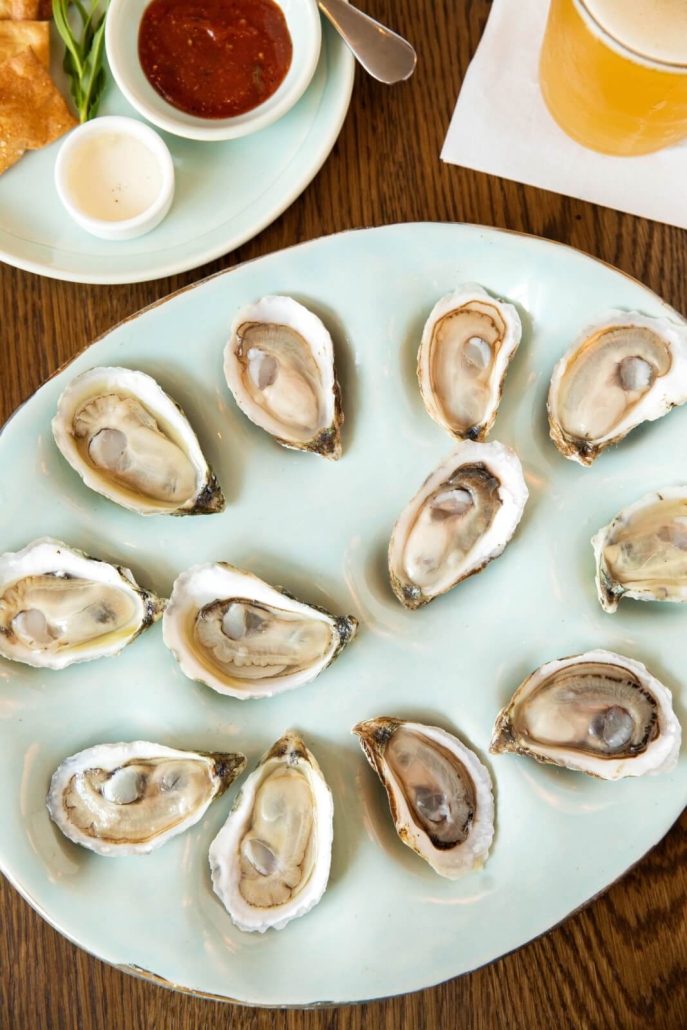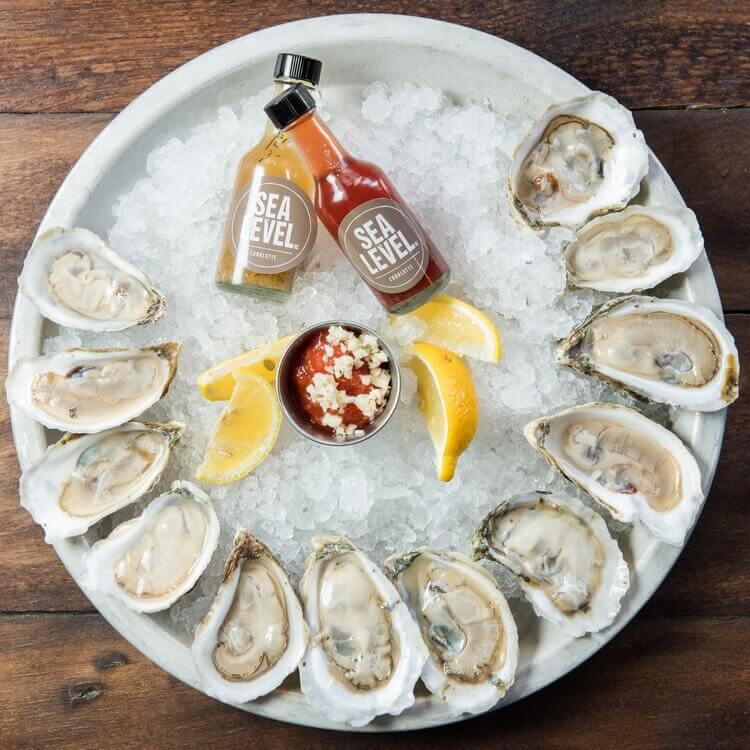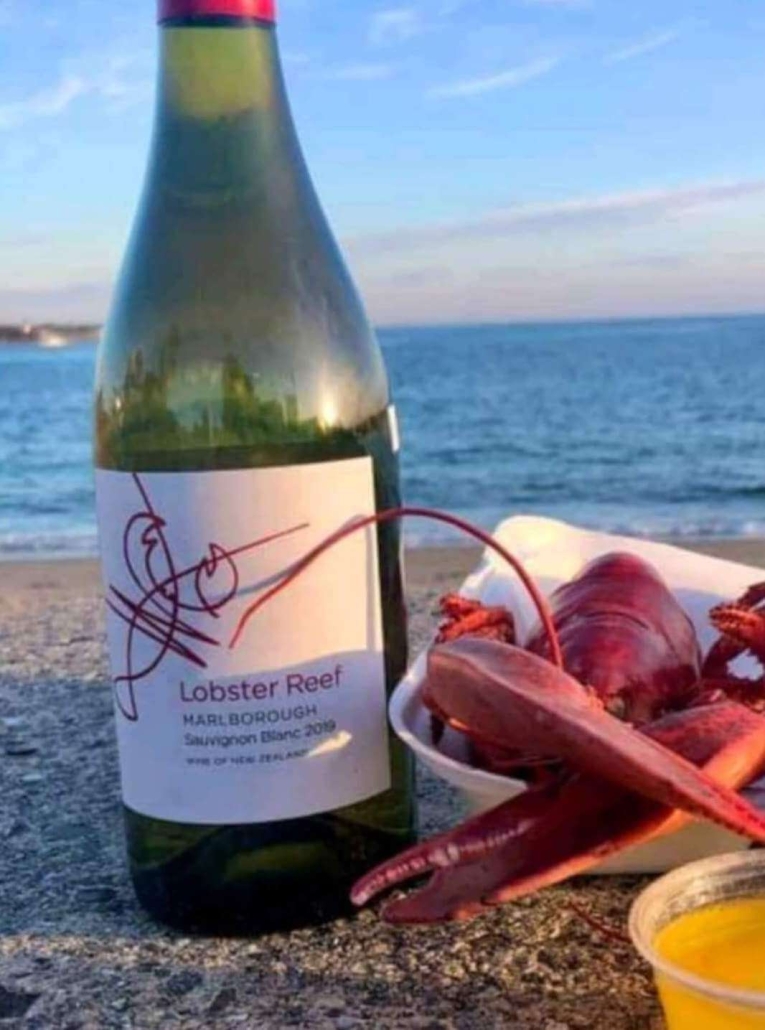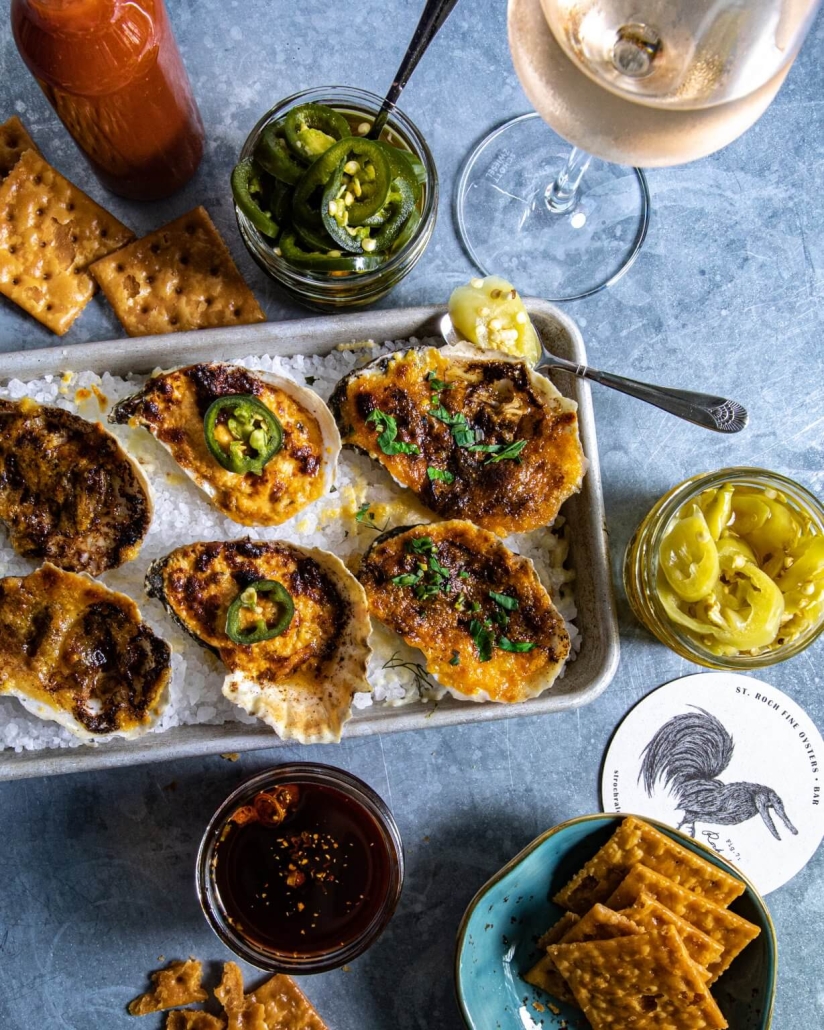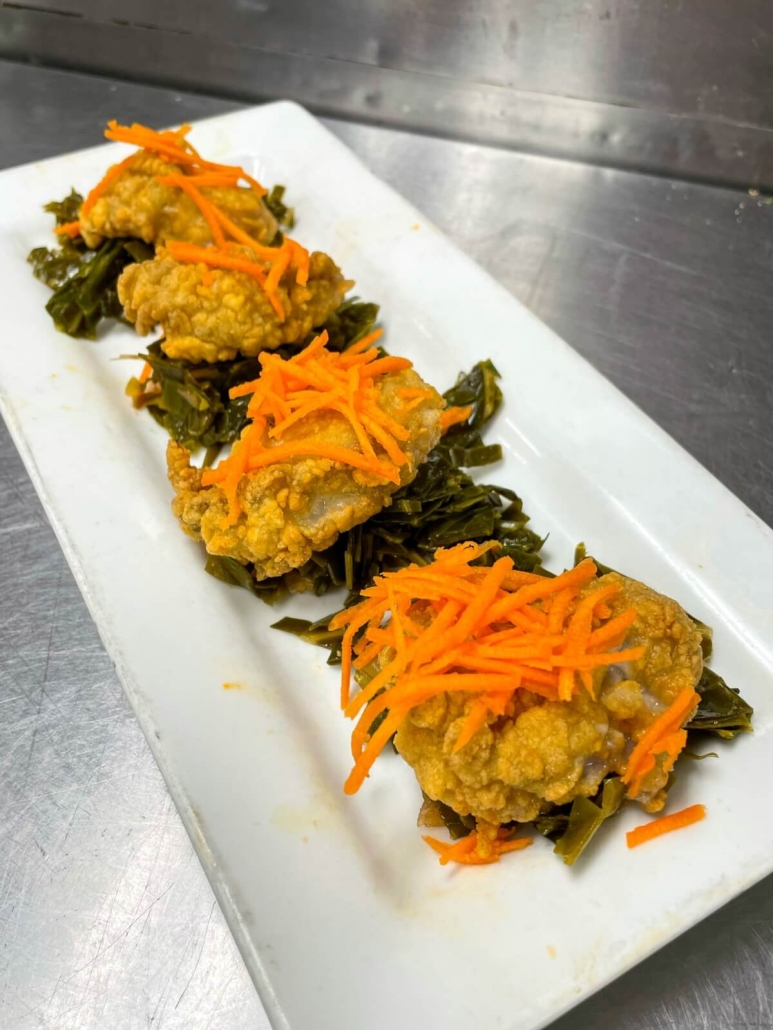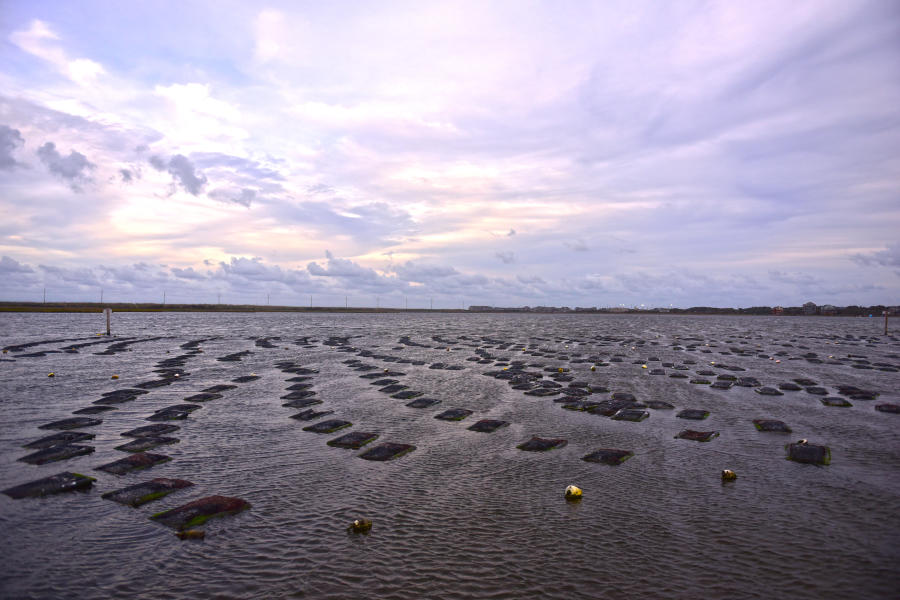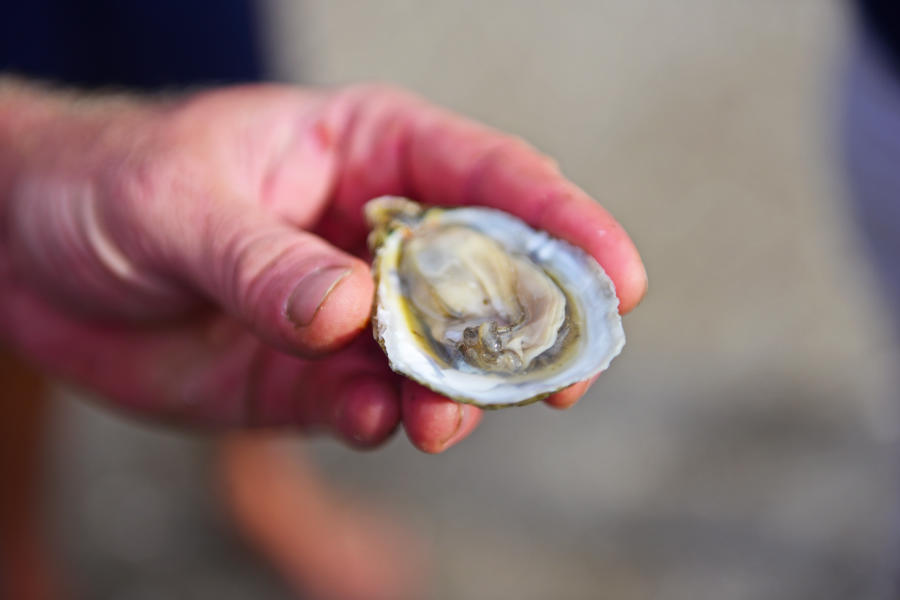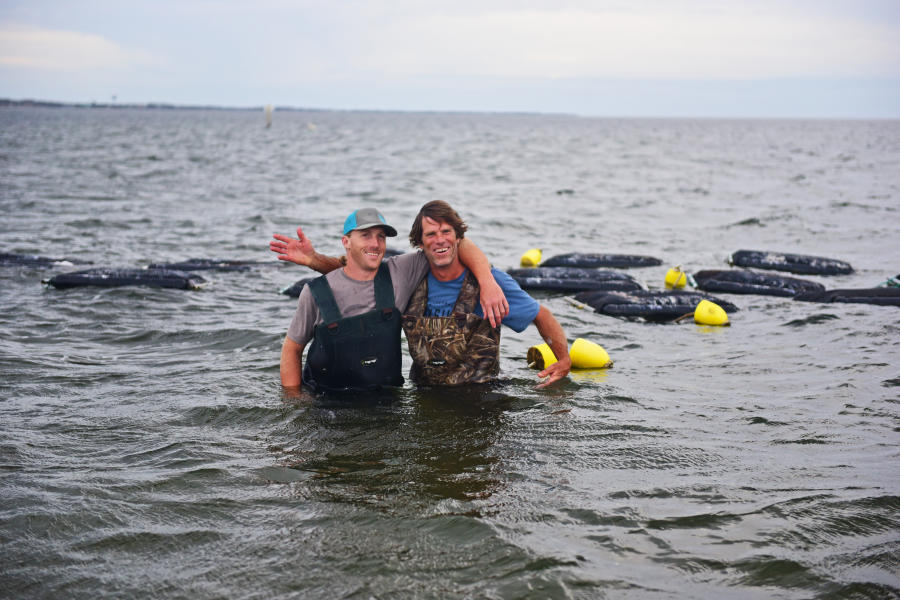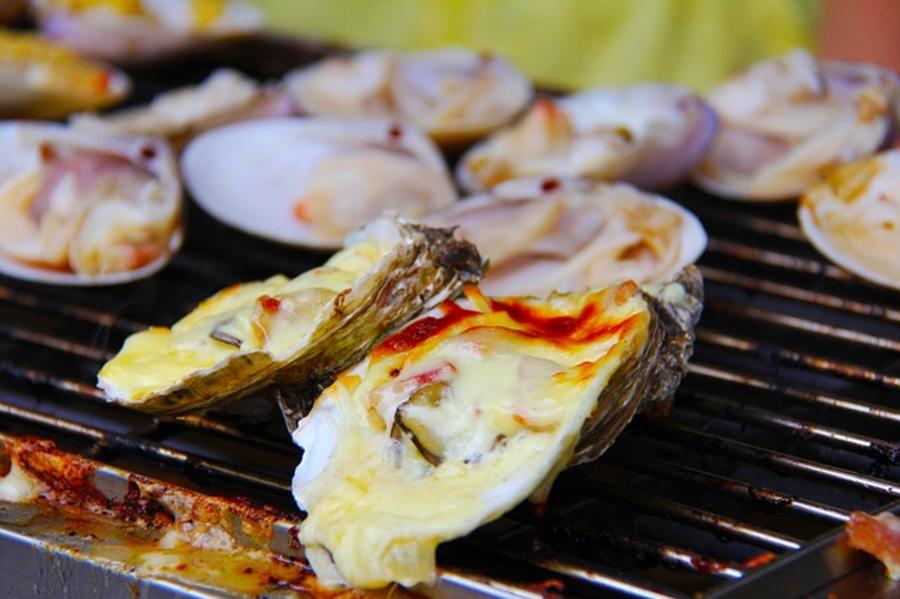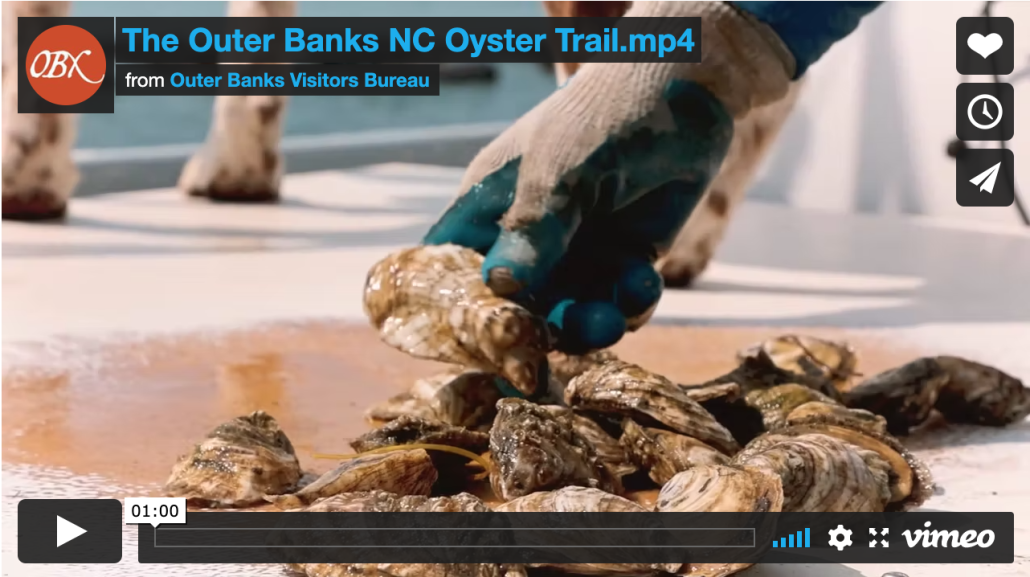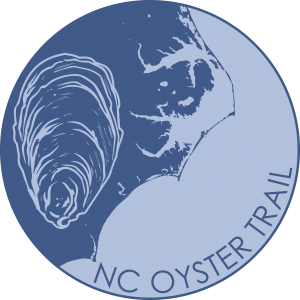by Carl Hedinger on June 14, 2022 | Reprinted from NC Tripping
Following the NC Oyster Trail has become one of our favorite things to do in North Carolina since its inception in 2020. You’ll find many trail sites along the coast of Eastern North Carolina, with others popping up in Central and Western NC.
There are multiple ways to experience this fantastic trail, and we’ve created this guide to help you explore it, along with some helpful info about the NC oyster industry.
Here’s a breakdown of this guide to the NC Oyster Trail:
- When can you eat NC Oysters?
- Is Oyster farming sustainable?
- What is the NC Oyster Trail?
- How to Find NC Oyster Trail Sites
- Oyster Farm Tours
- Restaurants and Raw Bars
- Events
- More
You can skip ahead to any section or continue reading about the NC Oyster Trail’s background.
When Can You Eat NC Oysters?

Before we dig into NC Oyster Trail sites, it’s essential to understand when you can eat North Carolina oysters. Wild oyster season in North Carolina typically runs from October through March, but we can consume farmed oysters throughout the year.
Is Oyster Farming Sustainable?

Oyster farming is also known as aquaculture or mariculture. They provide multiple benefits, including cleaner water, restored shorelines, and habitats for fish and other marine species.
Wild oysters may provide five times more benefits than farmed oysters, but the former’s populations struggle to recover from overharvesting.
On an oyster farm, a single oyster can filter up to 50 gallons of water daily, taking away carbon dioxide that makes the water too acidic. They also filter out excess nitrogen from fertilizer runoff and other harmful processes.
Oyster farming is considered one of the most sustainable food production methods and is a growing industry in North Carolina.
What is the NC Oyster Trail?

The NC Oyster Trail was created in 2020 by the North Carolina Coastal Federation, the NC Shellfish Growers Association, and NC Sea Grant. This unique tourism experience’s purpose is to teach the importance of oysters for coastal communities, the state’s seafood industry, and the environment.
The three organizations mentioned above also work to replenish North Carolina’s once-abundant oyster populations. Overharvesting depleted the North Carolina oyster population and the NC Oyster Trail showcases its resurgence.
You can experience the NC Oyster Trail in many ways, which we’ll detail below. They include the following:
- Oyster Farm Tours
- Restaurants and Markets that sell NC oysters
- NC Oyster Events
How to Find NC Oyster Trail Sites
As we mentioned, NC Oyster Trail sites are scattered along the North Carolina coast, joined by others in Central and Western NC. This official map will help you visually plan a visit.
Here are some of our favorite ways to experience the NC Oyster Trail.
Oyster Farm Tours

Personally, an Oyster Farm Tour is the best way to explore the NC Oyster Trail. Any oyster lover should know where our food comes from, and a tour is a perfect way to do that!

During an Oyster Farm Tour, you’ll talk to oyster growers, see the process from a sand grain-sized oyster seed to your plate, and learn about the environmental and social impacts.
Your tour may also include a sampling of oysters straight from the farm! Eating a salty oyster on a boat mere feet away from the farm will always be one of our most memorable experiences.
Oyster Farm Tour Companies


Our friends at Only in Onslow invited us to join the Hampstead-based Ghost Fleet Oyster Company near Topsail Island. The husband-wife team behind Ghost Fleet wants to bridge the gap between the farm and your plate.
A tour with Ghost Fleet will include a visit to owners Cody and Rachel Faison’s farm for up to 4 hours, sunset on the water, and of course, some of the best oysters in North Carolina!
We don’t want to seem too biased, and we understand you may not be in the Hampstead area. So here are some more Oyster farm tour companies in North Carolina and their base of operations:
- Cape Fear Oyster Company (Wilmington)
- Cape Hatteras Oyster Co (Buxton)
- Down East Mariculture Supply Co (Smyrna)
- Good Time Charlie’s Fisheries (Engelhard)
- Hooper Family Seafood (Smyrna)
- Hoop Pole Creek Oyster Company (Atlantic Beach)
- Island Time Excursions (Harkers Island)
- Middle Sound Mariculture (Wilmington)
- Ocracoke Mariculture
- Oysters Carolina (New Bern)
- Roysters NC (Beaufort)
- Seavisions Charters (Beaufort)
- Slash Creek Oyster Farm (Hatteras)
- Smith Oyster Co – Savage Inlet Oysters (Nags Head)
- Three Little Spats Oyster Company (Sneads Ferry)
Have you ever joined an oyster farm tour? We’d love to hear about your experiences!
Restaurants

Not all oysters served in our restaurants come from North Carolina, but more places are adding them to the menu! However, we know that these raw bars and restaurants are serving the best oysters in North Carolina!
- Blackbeard’s Grill and Steam Bar (Beaufort)
- Blue Water Grill (Manteo)
- Catch Restaurant (Wilmington)
- Coquina Fish Bar (Wilmington)
- Flying Melon Cafe (Ocracoke)
- The Froggy Dog (Avon)
- Howard’s Pub (Ocracoke)
- Locals Seafood Restaurant (Durham and Raleigh)
- Mandolin (Raleigh)
- Native Prime Provisions (Cashiers)
- Ocracoke Oyster Company
- Parley’s Sip & Steam (Washington)
- PinPoint Restaurant (Wilmington)
- Rusty Hooks Dockside Grill (Southport)
- Saltbox Seafood Joint (Durham)
- Science by the Sea (Beaufort)
- Sea Level NC (Charlotte)
- Seabird Restaurant (Wilmington)
- Seaview Crab Company Kitchen & Deli (Wilmington)
- Shuckin’ Shack Oyster Bar (Surf City)
- St. Roch Fine Oysters & Bar (Raleigh)
- Three10 Wilmington
- Tidewater Oyster Bar (Wilmington)
- Wrightsville Beach Brewery (Wilmington)
If you’re unsure where your oysters came from, you can ask for a harvest tag indicating the date and location they were farmed. Restaurants are required by law to provide the oyster harvest tag to you.
Do you know of a restaurant in NC that belongs on the NC Oyster Trail? Let us know in the comments or by email.
Markets
Markets are a significant part of the NC Oyster Trail, as you’ll be able to connect with farmers in cities and towns throughout the state.
Some of these markets offer delivery (marked with *), so you can shop for the best oysters from your phone.
- Carolina Beach Oyster Co (North Topsail)*
- Crystal Coast Oysters (Morehead City)*
- Earp’s Seafood Market (Raleigh)
- Island Time Seafood Stand (Mebane)*
- Locals Seafood (Chapel Hill, Durham, Morrisville, and Raleigh)*
- N.SEA. Oyster Co (Hampstead)*
- Native Prime Provisions (Cashiers)
- SeaCow Mobile Meat & Seafood Market (Raleigh)
- Seaview Crab Company (Belville, Cameron, Sanford, and Multiple Locations in Wilmington)
- Sticky Bottom Oyster Company (Hatteras)
- White Oak Oyster Company (South Durham Farmers Market)
NC Oyster Trail Events

You can learn about the NC Oyster Trail at these events held on our coast and elsewhere throughout the state:
- North Carolina Seafood Festival: This event in Morehead City is a tremendous celebration, typically held at the beginning of October.
- NC Oyster Festival: The NC Oyster Festival takes place in mid-October and offers music, fun events like shuck-offs and cook-offs, and more! Ocean Isle Beach in Brunswick County hosts the event, another reason to visit.
- NC Oyster Week: Each October, the NC Department of Natural and Cultural Resources collaborates with the NC Oyster Trail, North Carolina Sea Grant, and the NC Coastal Federation to present events throughout the state!
- Oyster Roasts and Fundraisers: Annual oyster roasts, fundraisers, and similarly themed one-off events occur throughout the year. NC Oyster Trail members prepare their tasty products and promote their excellent work at these events.
Do you know of any other NC Oyster Trail-friendly events to share? Kindly let us know in the comments section or by email!
More Ways to Experience the NC Oyster Trail

Beyond all the events, the restaurants, raw bars, and farm tours, these educational centers and institutions are crucial to spreading the NC Oyster Trail’s message:
- Bald Head Island Conservancy: This non-profit offers guided kayak trips through Bald Head Creek’s oyster beds. You can also volunteer for oyster reef restoration with the BHIC.
- Dare County Arts Council (Manteo): One unique stop on the NC Oyster Trail is the Dare County Arts Council. The artists within this organization love to incorporate oysters (and other marine themes) in their works.
- Hatteras Island Ocean Center (Hatteras): Whether you’re staying on Hatteras Island or nearby Ocracoke Island, this is an ideal place to visit on the Outer Banks. Programs include kayaking through salt marsh and close-up looks at wild oyster beds.
- NC Coastal Federation (Multiple Locations): The NCCF is one major player in the NC Oyster Trail, and this non-profit organization is deeply involved in restoring and protecting our coastal waters. Volunteers and support are always welcome!
- NC Estuarium (Washington): The wonderful coastal town of Washington hosts the NC Estuarium. The center offers exhibits on North Carolina’s oysters and oyster farming.
More Themed Trails
Themed trails are a fun way to explore North Carolina, and there are even more beyond the NC Oyster Trail.


More Things to Do in Eastern North Carolina





